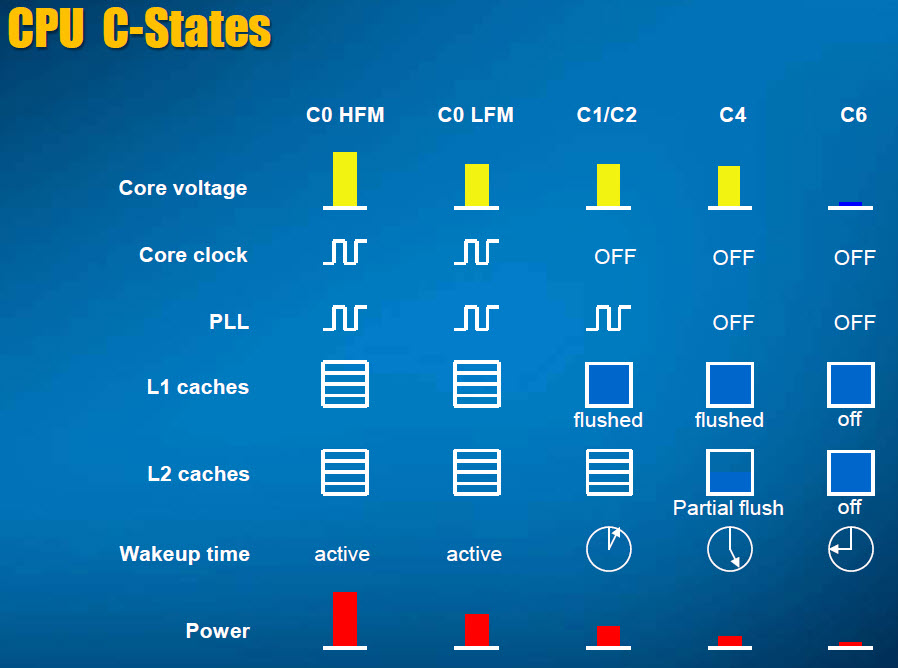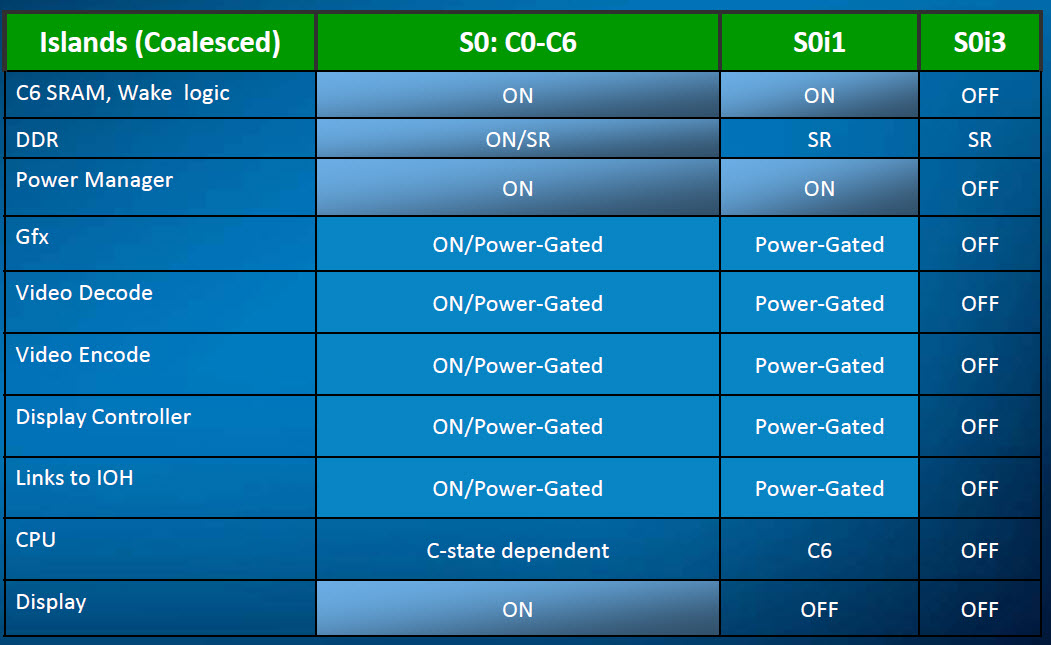Meet Moorestown: Intel's Atom Platform For The Next 10 Billion Devices
Intel’s second-gen Atom platform, Moorestown, positions the chip giant to have a killer smartphone and MID platform in 2010. The old Atom Z5xx drawbacks seem fixed. Why does Moorestown rock, and will it be enough to let Intel advance in this market?
New Power States
Another improvement over Silverthorne is Intel’s addition of “Enhanced Geyserville,” or Intel Enhanced SpeedStep Technology. This is part of how Lincroft chips are able to run at 200 MHz, while Silverthorne bottomed out at 600 MHz.
Just as importantly, Lincroft now uses power gating across 19 “islands” within the processing core. We’ve seen similar power gating employed in recent Core i-series designs, where current is cut to an entire block within the CPU in order to prevent the leakage that increasingly plagues circuits the smaller they get. This is a much more granular and effective approach than the older method of dropping power (and thus performance) en masse across the core, which still left leakage doors wide open. This was the model that Menlow used, wherein power was either in an on, off, or sleep state. There was nothing in between. With Moorestown, we can now control which islands are active or powered down.
The conventional CPU power states of C0 through C6 still carry forward into Lincroft and are now often collectively called S0. But one of the critical improvements in this generation is the addition of two new power states called S0i1 and S0i3.
S0i1 gets utilized during idle periods in which user is still classified as being interactive but may not be doing anything at just that moment, such as when looking at the home screen or reading a Web page. As you can see in the image above, the majority of islands in the CPU are powered off in S0i1. This delivers a 10% to 15% drop in power use while active. There’s about a 600 microsecond latency when entering the state and an exit target of 1.2 milliseconds.
S0i3 kicks in when the user isn’t actively using the device. Essentially, this is Lincroft’s standby mode, the state in which Intel estimates that a handheld or tablet will spend over 99% of its time over prolonged use. Only the SRAM, GPIO, and System Power Management islands receive any power. Entry latency is 450 microseconds while exit latency hits about 3.1 milliseconds. To get a sense of just how much power S0i1 cuts across the Linfield die, check out the the following image. Then imagine nothing but empty, unmarked blue save for two fields in the top-left corner. That's S0i3.
Intel draws the analogy of walking into a house at night. Under the old model, there was one light switch. You walked in the door, flicked the switch, and the whole house lit up, albeit with a rudimentary dimmer attached. Under Lincroft, you get to turn on lights only in the rooms you need as you walk into them. When you exit the room, out go that space’s lights automatically.
Taken all together, the power improvements in Moorestown yield a 2x to 3x reduction in active platform power compared to Menlow, and a 50x reduction in idle platform power. Without this, Intel couldn’t have met its battery life objectives and become a real contender in the ultramobile market.
Get Tom's Hardware's best news and in-depth reviews, straight to your inbox.
-
yannifb Huh, i wonder how this will compete with Bobcat, which supposedly will have 90% of desktop chip performance according to AMD.Reply -
descendency Why isn't this a 32nm product yet? If your concern (which it would be with said devices) is power consumption, shrinking the die can only help...Reply -
Greg_77 silverx75Man, and the HTC Incredible just came out....Man, and I just got the HTC Incredible... ;)Reply
And so the march of technology continues! -
well we can only wait till amd gets their ULV chips out with their on die graphics so we can get a nice comparison.Reply
-
williamvw descendencyWhy isn't this a 32nm product yet? If your concern (which it would be with said devices) is power consumption, shrinking the die can only help...Time to market. 45 nm was quicker for development and it accomplished what needed to get done at this time. That's the official answer. Unofficially, sure, we all know 32 nm will help, but this is business for consumers. Right or wrong, you don't play all of your cards right away.Reply
-
seboj I've only had time to read half the article so far, but I'm excited! Good stuff, good stuff.Reply -
burnley14 This is more exciting to me than the release of 6-core processors and the like because these advances produce tangible results for my daily use. Good work Intel!Reply -
ta152h Do we really need x86 plaguing phones now? Good God, why didn't they use a more efficient instruction set for this? Compatibility isn't very important with the PC, since all the software will be new anyway.Reply
I like the Atom, but not in this role. x86 adds inefficiencies that aren't balanced by a need for compatibility in this market.



